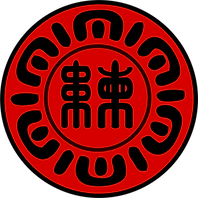
COMBAT JŪJUTSU

A CERTIFIED BRANCH OF
RENSHINKAN DAITO-RYŪ
AIKI-JŪJUTSU
大東流 合気柔術






Aiki-Jūjutsu Class
Class Schedule
Saturday: 10am
Monday: 6pm
Tue.-Thu: 6pm

"The only way to see if you can swim,
is to get in the water"
The core of our training is centered around the Koryū fighting system of Daitō-ryū Aiki-Jūjutsu.
Koryū Ryū Jūjutsu represents the original battlefield martial arts of the samurai, passed down through centuries in traditional schools. It’s precise, dangerous, and deeply rooted in Japanese history, making it distinct from modern jujutsu styles which emphasize sport or self-defense.
If you're studying Koryū, you're not just learning techniques—you're preserving an ancient martial heritage.
Our Jūjutsu is enhanced with elements of Guazabara Mano Duro, Police Combatives, and Carlson Gracie Jiu-Jitsu. This is not a sport—it’s a practical system of self-defense. By combining the principles of Aiki-jūjutsu with these modern combative styles and adding a method of training that is randori centric, students train in a comprehensive approach to real-world violence, gaining the skills needed to navigate today’s threats with confidence and control.
Atemi-waza (striking), Katame-Waza (holding / grappling), Nagi-Waza (Throws / Takedowns) and Ne-waza (ground-fighting), are the essential components of combat jūjutsu and crucial for self-defense skill development.
Ne-Waza / Ground Fighting
Ground fighting is a critical component of self-defense that should never be overlooked. In real-world situations, being taken to the ground can actually level the playing field—neutralizing an attacker’s power and creating opportunities for a trained individual to defend effectively. Our ground fighting system is uniquely designed, integrating principles from various martial disciplines, and law enforcement strategies, all while remaining firmly grounded to the traditional philosophy and values of Daitō-Ryū Aiki- Jūjutsu.
While it may resemble Brazilian Jiu-Jitsu (BJJ), our approach to Ne Waza is focused on practical self-defense and survival. The objective isn't to dominate or submit an opponent unless absolutely necessary—it's to regain your footing and remove yourself from the threat.
We also invite you to reflect on your current training: Does it prepare you for real-world confrontations? Can it adapt to unpredictable environments outside the dojo? And perhaps most importantly—how would it hold up against a striking opponent if your training has only emphasized grappling?
Pressure-Test Your Skill
Training begins with a cooperative partner (uke), allowing students to develop proper mechanics, positioning, and control in a safe, structured environment. As their proficiency improves, resistance is gradually introduced. This progression challenges the student to apply techniques from various positions and under increasingly realistic conditions—ensuring the skills hold up not just in theory, but in practice.
WHAT IS DAITŌ-RYŪ AIKI-JŪJUTSU?
Daitō-ryū Aiki-jūjutsu first became widely known in the early 20th century under the headmastership of Takeda Sōkaku. Takeda had extensive training in several martial arts and referred to the style he taught as "Daitō-ryū" (literally, "Great Eastern School"). It is a system of jūjutsu that includes both unarmed fighting and minor weapon techniques. It's known for its unique approach to using an opponent's movement against them.
Perez Sensei is a member of the Japanese Renshinkan Branch of Daito-Ryu Aiki-Jūjutsu and authorized to teach it in the United States. The Renshinkan branch of Daito-ryu is known for its dedication to preserving the traditional aspects of the art while also adapting it for modern practice.

Carlson Gracie, Jr.





2004


